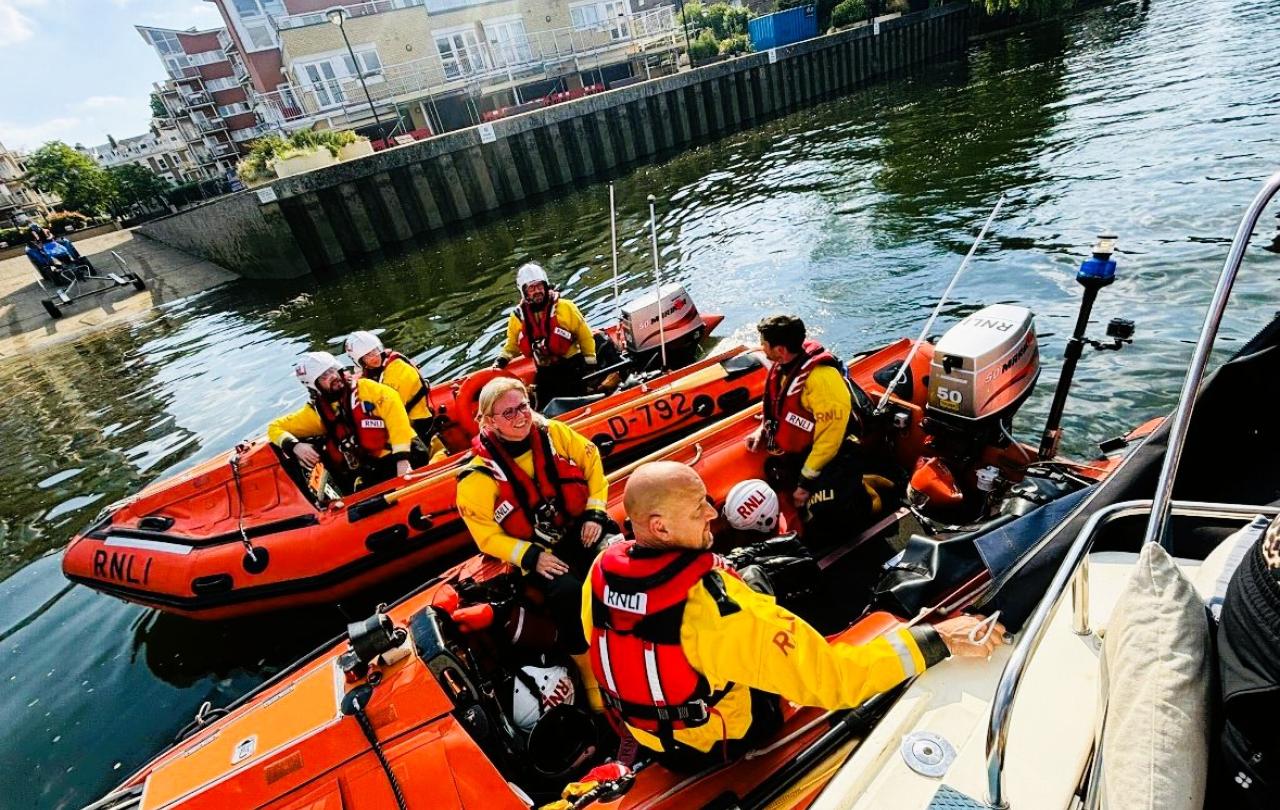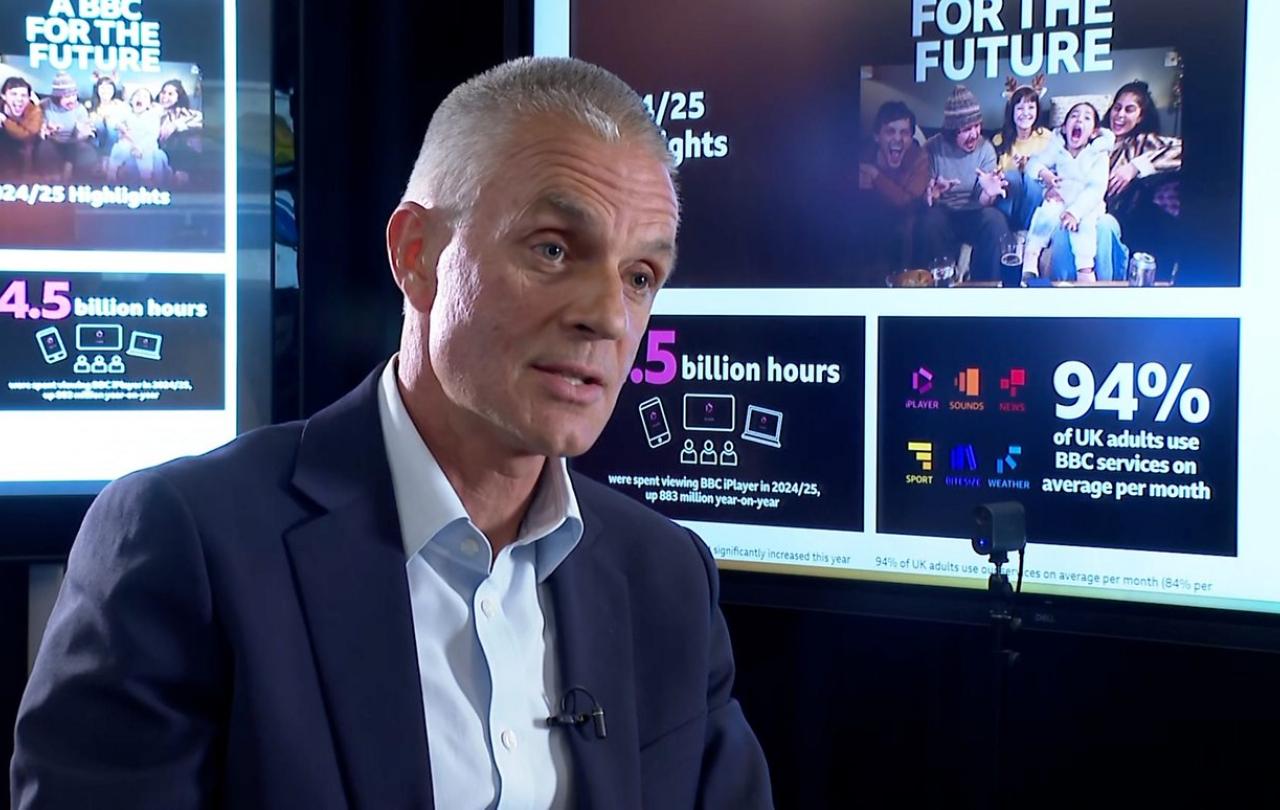
It’s a hot summer evening and there are 30 of us sweating in our dry suits. Tuesdays usually mean lifeboat training, but this night is a little different. An intermission from the usual intensity of a team-building exercise: racing two lifeboats across the river Thames. Allocated into teams of two rowing in a knockout tournament, we are going to be here for a while. Our cheers provide the soundtrack for the BBC radio crew recording a programme on volunteering. The mood is convivial; the competition is fierce. None of us have to be here; all of us choose to be. We are a lifeboat crew, and we are all volunteers.
Around 25 million people in the UK do some form of volunteering. And they are celebrated during Volunteers’ Week, which has been running for 41 years. The benefits are well documented these days. The mental and physical health boost. A sense of purpose. The chance to learn new skills. A route to forging connections with other people.
Despite this, though, the number of people volunteering has been on a twenty-year decline. One in three organisations are struggling to retain volunteers, in part due to the cost-of-living crisis making people’s time and capacity more precious than ever.
Beyond that, our use of the word seems to have shifted to reflect unwanted obligations, rather than a deeply held desire to serve. ‘I suppose I better volunteer to put out the chairs’ we might pronounce with the deathly weight of Katniss Everdeen’s ‘I volunteer as tribute,’ glancing to the left and the right in case anyone saves us from the undesirable task. It seems the very idea of volunteering needs rescue.
It wasn’t on my radar to be lifeboat crew, but an unexpected new job in an unfamiliar London suburb unlocked this possibility. When I considered ‘Why wouldn’t I?’, I couldn’t find a strong reason. So, one autumn evening I trekked down for my first Tuesday night at Teddington lifeboat station. It was time to fill in the paperwork: I was officially a volunteer.
Over the months that followed, I found myself wondering why other people gave their time, energy and skills to complete the nearly 50 training modules and to be available 24/7 when someone on the water was in need. I hungered for people’s stories, to know why they kept answering the call when their beds were warm and the night was unknown. So, over the four years that I was on the crew, I asked them. I spoke with teachers and students, company directors and full-time parents. I heard stories of multiple generations on a crew, their family’s blood running orange and blue. One woman spoke of overcoming her fear of heights to scale the side of a boat; another had an unexpected tale of a dolphin attack. Each time, I had the same question: why do you do it?
And I was struck by the fact that none of them gave an answer that fully added up. They could name parts of it: care for people, teamwork, a love of the sea. Sometimes of the reasons they started (‘Dad did it’) were not why they stayed on (‘I could make a palpable difference’). I didn’t meet anyone who didn’t enjoy being on the water. Play and peril can co-exist – and we need to have moments of joy along the way if we’re going to be in it for the long haul. But in each case, the answers always seemed to come up a little short. If I was looking for something neat and complete, I wasn’t finding it.
This is, perhaps, the difference between volunteering and having a hobby. At some point, volunteering will cost you something.
Back on the river, the knockout races are suddenly interrupted. A call from the coastguard: there’s a person in difficulty in the river. The mood switch is instantaneous; the action swings from contesting to collaborating to get a boat headed upstream as fast as possible. Somewhere, someone is having a very bad day. This is what we exist for.
The RNLI was born out of a need. In the early nineteenth century, nearly 2,000 ships – and their crews – were being wrecked on British and Irish coasts every year. Sir William Hillary saw this loss firsthand from his home on the Isle of Man, joining with others to rescue as many as possible – but it wasn’t enough. People continued to perish. So, he rallied other activists and philanthropists, and in a London pub, the charity now called the Royal National Lifeboat Institution was formed. Hillary’s motto, 'with courage, nothing is impossible’, can still be found adorning lifeboat stations around the country.
None of the lifeboat crew members that I met seemed to think of themselves as anything but ordinary. They were full of admiration in the stories of fellow crew mates, but saw themselves as entirely human, naming everyday needs and familiar comforts. Writing about courage, Andrew Davison recognised that,
‘The willingness of a courageous person to forgo ease, safety, the comforts of home, and even to risk life and limb, does not spring from hatred of any of those things’.
This is, perhaps, the difference between volunteering and having a hobby (also commendable for its health benefits, sense of purpose, opportunities for connection). At some point, volunteering will cost you something. That sacrifice is needed demonstrates the level of care; otherwise, it’s simply another act of self-actualisation in the service of the volunteer themselves.
It’s dark on the river and the boat crew is still out. The BBC’s team has packed up for the evening. We have tidied the station, no evidence of the antics of hours earlier. We depart. Close to midnight, those of us who can, return. We bring the boat in from the water, and make it ready for the next call, which will inevitably come. One less job for those who’ve been on duty all evening. It’s the least we can do.
In the origins of the term is a spirit of offering. The Latin voluntaries carries a sense of ‘to give of one’s free will’. This, perhaps, is where we’ve lost our way with the whole idea. For there to be a sense of duress in volunteering is to strip the generous act of its power. Where there is obligation on one side and self-interest on the other, we can find the middle ground marked by devotion, by having chosen to serve and therefore having the commitment to see it through. This is the invitation that volunteering can offer us, and that I glimpsed from people who had been volunteering on the lifeboats for decades.
Writing to the sea-faring city of Ephesus in ancient Greece, the church leader Paul encouraged people to ‘submit to one another’, which is another way of saying sacrificially help each other. In smaller coastal communities, a lifeboat crew might be called out to save a family member. In London, a city of millions, it will always be a stranger. But either way the decision was the same: to show up. The reasons why we do it don’t always add up. There are flavours of compassion, of wanting to be useful, to be part of something bigger. But there seems to be something else as well. A dedication to meeting a need. Put another way, we might call it love.
Support Seen & Unseen
Since Spring 2023, our readers have enjoyed over 1,000 articles. All for free.
This is made possible through the generosity of our amazing community of supporters.
If you enjoy Seen & Unseen, would you consider making a gift towards our work?
Do so by joining Behind The Seen. Alongside other benefits, you’ll receive an extra fortnightly email from me sharing my reading and reflections on the ideas that are shaping our times.
Graham Tomlin
Editor-in-Chief





